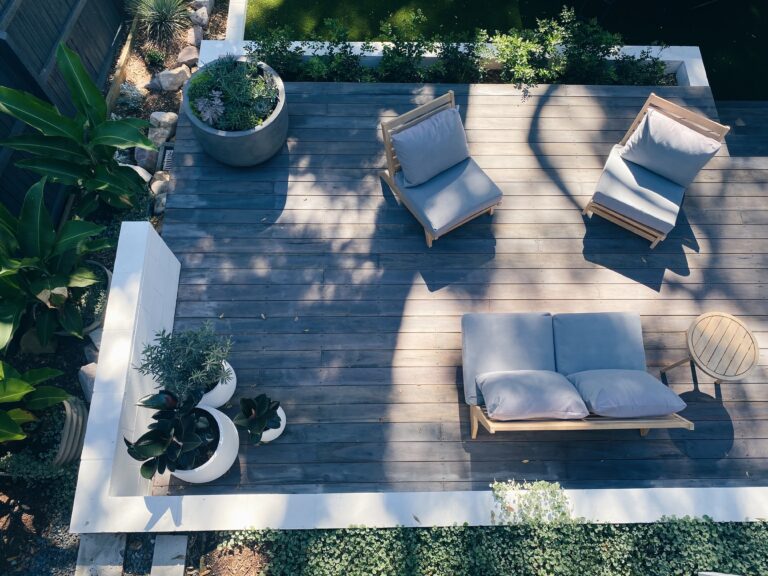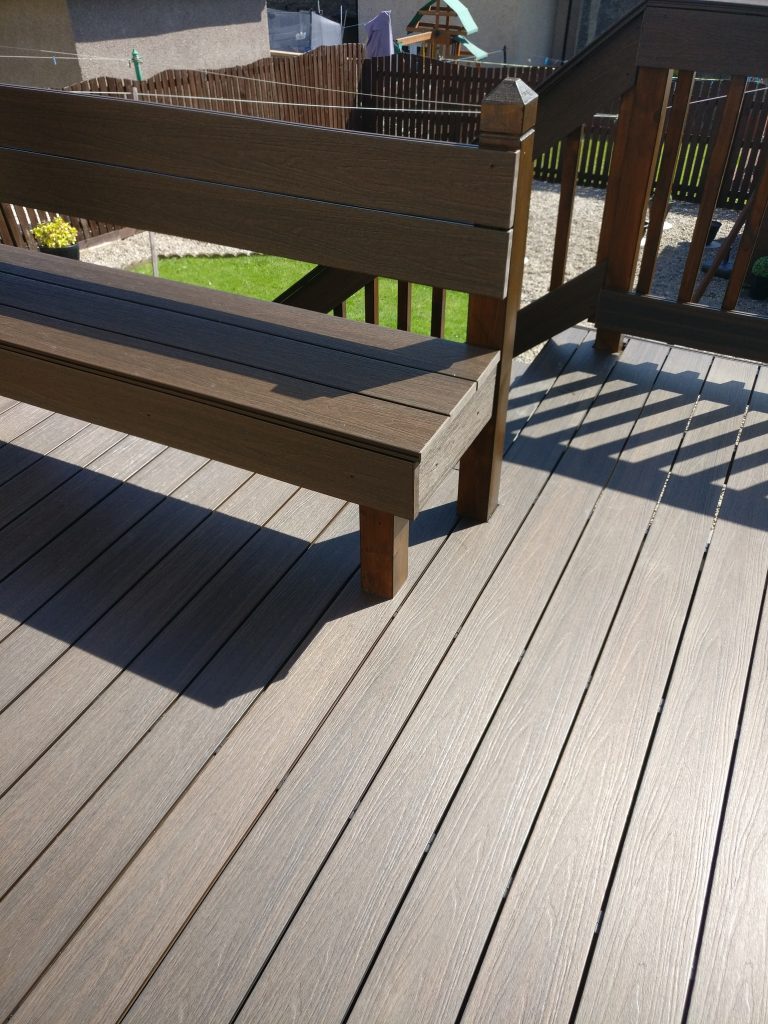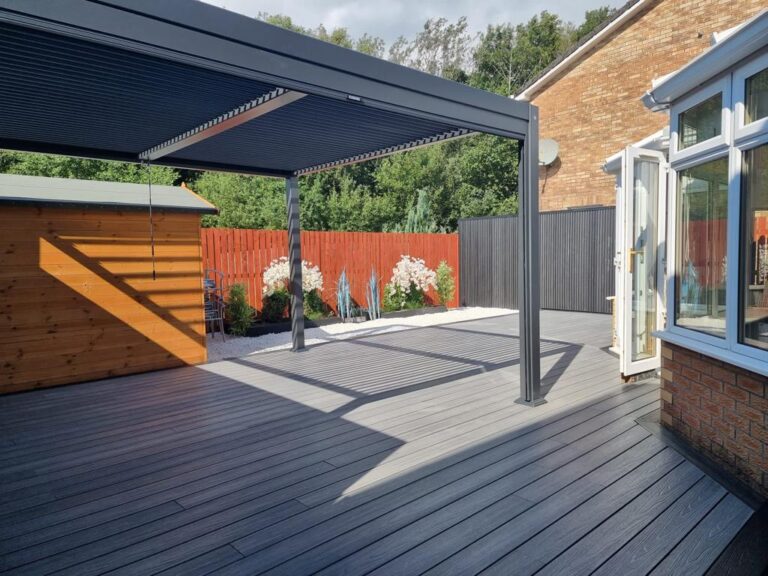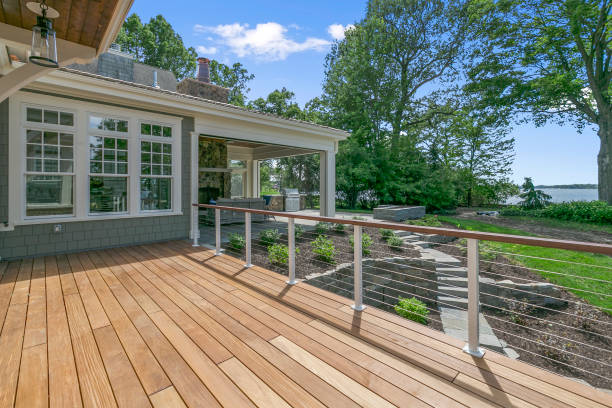Composite decking has become a popular choice for garden renovations due to its durability, low maintenance, and aesthetic appeal. But what exactly is composite decking and why should you consider using it in your garden? In this comprehensive guide, we will explore the steps to prepare a garden for composite decking, the tools and materials needed, and the benefits of choosing this option for your outdoor space. Whether you’re a DIY enthusiast or hiring a professional, understanding the process and requirements for installing composite decking will ensure a successful and long-lasting addition to your garden. So, let’s dive into the details of how to transform your outdoor space with composite decking.
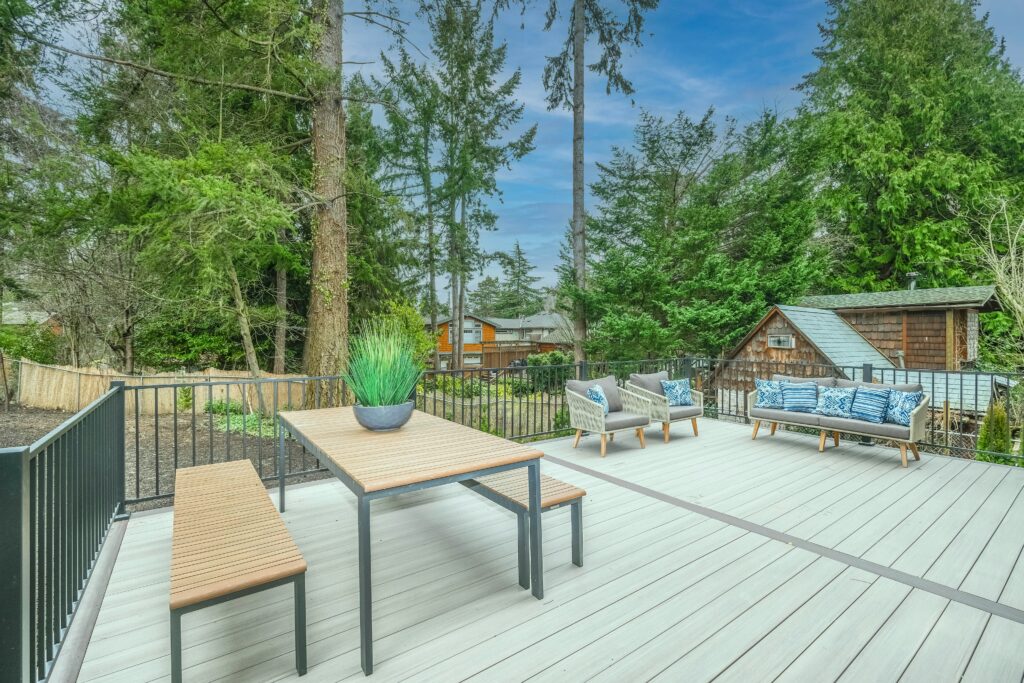
What Is Composite Decking?
Composite decking, a popular choice for outdoor living spaces, is a sustainable and durable alternative to traditional wood decking, offering an aesthetically pleasing and low-maintenance solution for garden renovations and home improvement projects.
The composition of composite decking typically includes a blend of wood fibres, recycled plastics, and binding agents, providing a strong and resilient material that withstands harsh weather conditions and resists fading, staining, and mould growth. Composite decking requires minimal upkeep, saving homeowners time and effort. Its versatility allows for a wide range of design options, from natural wood-like finishes to modern, sleek appearances, enhancing the overall visual appeal of outdoor spaces.
With its eco-friendly nature and long-lasting performance, composite decking is a popular choice for those seeking a sustainable, attractive, and low-maintenance outdoor flooring solution.
Why Use Composite Decking in a Garden?
Composite decking is an ideal choice for gardens due to its durable and sustainable nature, offering weather resistance, eco-friendly properties, and a versatile outdoor environment solution for long-term use.
Its durability ensures that it can withstand the elements, such as rain, wind, and sun exposure, without warping, cracking, or fading. Composite decking is made from recycled materials, making it an environmentally friendly option for enhancing outdoor spaces. The sustainable nature of composite decking means that it requires minimal maintenance, reducing the need for frequent repairs or replacements, and contributing to a lower environmental impact.
Its versatility allows for creative designs, tailored to specific garden themes, while providing a stable and safe surface for various outdoor activities, making it an excellent choice for eco-conscious garden owners.
What Are the Steps to Prepare a Garden for Composite Decking?
Preparing a garden for composite decking involves several key steps, including landscaping, addressing soil and drainage considerations, creating a level and sturdy structure, selecting appropriate materials, and planning the layout and measurements for the decking area, including raised garden beds if desired.
It is crucial to start by assessing the soil conditions and ensuring proper drainage to prevent moisture-related issues. Once the soil is ready, it’s important to focus on establishing a level foundation for the decking structure, which may involve using support posts or adjustable risers.
Choosing the right materials, such as composite decking boards that are durable and low-maintenance, is essential for long-term performance. Carefully planning the layout and measuring accurately can ensure a smooth installation process, creating a visually appealing and functional outdoor space.
Measure and Plan the Area
Before commencing the installation, precise measurements and detailed planning are essential for the garden area, ensuring an optimal layout and selection of suitable composite decking materials to harmonise with the overall landscaping and outdoor design.
Careful consideration of the available space facilitates the creation of functional and aesthetically pleasing outdoor areas. Accurate measurements help in determining the appropriate dimensions for seating, pathways, and focal points within the garden.
Meticulous planning is crucial for integrating the chosen decking materials seamlessly into the landscape, enhancing the overall appeal. Proper selection and placement of plants, hardscaping elements, and outdoor furnishings contribute to the cohesiveness of the design, resulting in a space that reflects both practicality and visual allure.
Remove existing buildings and vegetation
Clearing the garden area involves the removal of any existing structures and vegetation, preparing the ground for the construction of the composite decking and enhancing the overall outdoor design and renovation.
This process includes the careful dismantling of old garden sheds, removal of overgrown vegetation, and clearing of any debris to create a clean canvas for the new outdoor structure. It’s essential to consider the layout and functionality while clearing, ensuring that the space is ready for the installation of new features such as pathways, plant beds, and seating areas.
By carefully clearing the garden area, it sets the stage for a successful and visually appealing outdoor renovation.
Level the Ground
Achieving a level ground is crucial for the stability and integrity of the garden structure, providing a solid foundation and support for the subsequent installation of the composite decking, ensuring a seamless and durable outdoor environment.
It is essential for the ground to be levelled accurately to avoid any potential issues with the composite decking, such as warping or uneven surfaces. Properly levelled ground also facilitates efficient water drainage, ensuring that the decking remains free from potential water damage.
A level ground provides a smooth and visually appealing framework for the garden, enhancing the overall aesthetic and functionality of the outdoor space. Without proper groundwork, the decking may not be able to withstand external pressures and usage over time, emphasising the significance of this foundational step.
Install a Weed Barrier
Integrating a weed barrier is essential to prevent weed growth, ensure proper water drainage, and safeguard the integrity of the composite decking, creating a stable and low-maintenance outdoor surface while protecting the garden soil and underlying composite material from potential damage.
It plays a fundamental role in promoting efficient water drainage, preventing waterlogging, and maintaining a healthy garden environment. By inhibiting weed growth, the barrier minimizes the competition for nutrients and moisture, enhancing the overall health of the garden. It acts as a protective layer that preserves the structural integrity of the composite decking, ensuring its longevity and reducing maintenance needs. This is especially significant for areas with diverse weather conditions, where the barrier aids in preserving the garden soil by preventing erosion and maintaining its composition for optimum plant growth.
Create a Solid Foundation
Establishing a strong foundation is essential for the structural support and longevity of the composite decking, ensuring a durable and reliable outdoor construction that harmonises with the existing garden structure and supports the composite material effectively.
This foundation serves as the crucial base for the decking, providing stability and preventing drooping or warping over time. It also plays a significant role in distributing the weight load, ensuring that the decking performs optimally in various weather conditions. By prioritising a strong foundation, homeowners can enhance the overall integrity and aesthetic appeal of their outdoor space, creating a lasting, functional, and visually appealing addition to their garden or landscape.
Lay the Composite Decking Boards
The installation process involves laying the composite decking boards onto the prepared substructure, securing them with appropriate joists, screws, and fasteners to ensure a sturdy and visually appealing outdoor decking area that complements the garden’s aesthetics and functionality.
The substructure serves as the foundation for the composite decking, providing the necessary support and stability. Properly spaced joists are then installed to create a strong base for the decking boards, ensuring even weight distribution and minimising the risk of sagging or warping. Stainless steel screws and fasteners are used to secure the boards firmly in place, preventing any potential movement or loosening over time, resulting in a long-lasting and durable outdoor deck surface.
Add Finishing Touches
Completing the project involves adding aesthetic and functional elements such as planters, enhancing the overall garden aesthetics, and contributing to sustainable gardening practices by integrating greenery and vegetation into the garden landscaping, elevating the outdoor design and construction.
These planters serve as essential components for creating an inviting outdoor space, where various types of outdoor planters and vegetation can thrive harmoniously. Incorporating garden planters also allows for a more personalised touch, with the ability to mix and match different plant varieties, colours, and textures, further adding to the visual appeal of the composite decking project.
These planters play a vital role in providing a suitable environment for sustainable gardening, promoting biodiversity and environmental consciousness within the outdoor garden landscape.
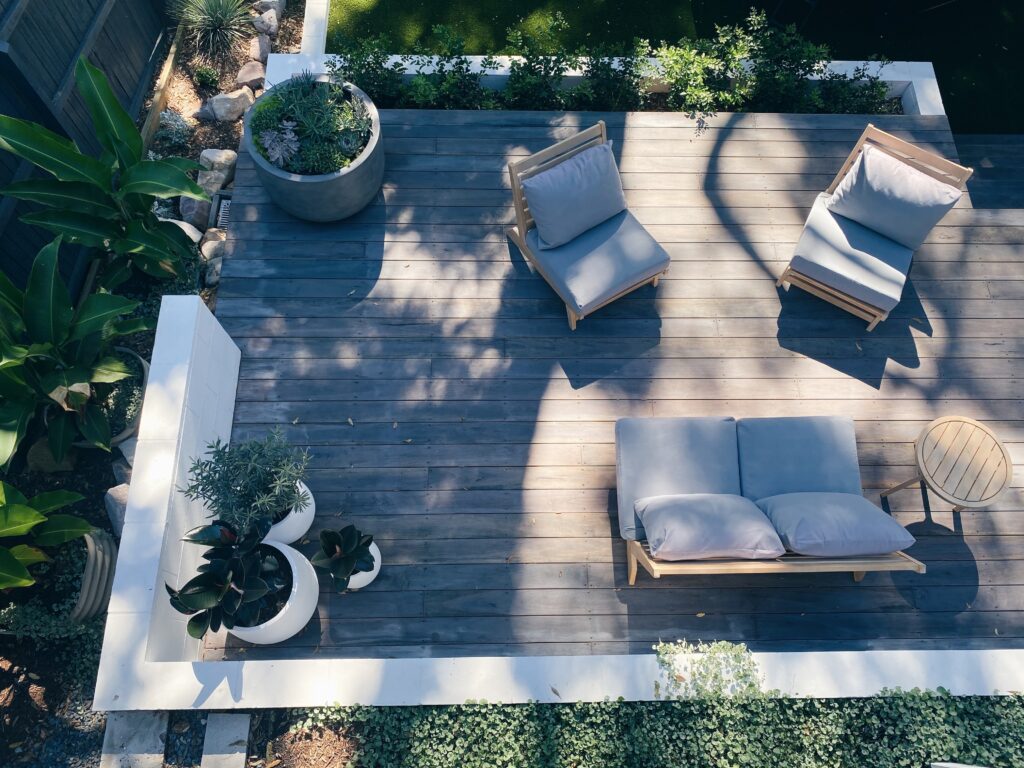
What Tools and Materials Are Needed for Preparing a Garden for Composite Decking?
The preparation of a garden for composite decking requires a variety of tools and materials, including those for construction, decking installation, maintenance, and adherence to building regulations, ensuring a smooth and compliant process for outdoor flooring enhancement.
These essential tools and materials encompass items such as a level, tape measure, decking screws, and joist hangers for precise construction. High-quality composite decking boards, protective coatings, and cleaning solutions play a crucial role in ongoing maintenance, ensuring durability and aesthetics.
Compliance with building regulations necessitates securing permits, following load-bearing requirements, and using non-combustible materials in designated areas, emphasising safety and structural integrity.
Measuring Tape
Accurate measurements are crucial for the garden layout and planning, making a measuring tape an indispensable tool for ensuring precision and efficiency in the composite decking project.
Without accurate measurements, the composite decking project could face issues such as uneven surfaces, ill-fitting materials, and wasted resources. A measuring tape allows for precise dimensions, ensuring that the decking materials fit perfectly and the layout meets the desired specifications. It aids in determining the exact placement of plants, furniture, and other elements, leading to a well-balanced and aesthetically pleasing garden design.
The measuring tape serves as a fundamental instrument in achieving a harmonious and functional outdoor living space.
Shovel and Wheelbarrow
A spade and wheelbarrow are essential for soil removal and transportation, facilitating efficient and organised gardening activities and the preparation of the outdoor space for the composite decking project.
These tools enable gardeners to easily dig and move soil, making tasks like planting, potting, and mulching much simpler. By using a spade to break ground and a wheelbarrow to haul away the soil, individuals can maintain a neat and tidy garden space while also reducing strain on their bodies. The proper management of soil removal and preparation is vital in laying the groundwork for a successful gardening project and creating an inviting outdoor atmosphere.
Leveling Tool
A levelling tool is essential for achieving a uniform ground level, ensuring precision and stability in the garden construction and outdoor structure for the successful installation of composite decking. It plays a crucial role in ensuring that the surface is perfectly flat, preventing any unevenness that could compromise the decking’s stability and longevity.
By using a levelling tool, the composite decking can be installed with confidence, knowing that the foundation beneath it is solid and level. This is particularly important for outdoor structures, where exposure to the elements can greatly impact the long-term durability and performance of the decking. The precision offered by a levelling tool is indispensable in creating a professional and visually appealing outdoor space.
Weed Barrier Fabric
Weed barrier fabric is an essential material for outdoor construction, providing vital protection against weed growth and simplifying garden maintenance as part of the composite decking project.
It acts as a protective layer, inhibiting the growth of unwanted plants and ensuring that your garden or landscape remains tidy and well-maintained. By effectively blocking sunlight and air from reaching the soil, weed barrier fabric prevents weed seeds from germinating, reducing the need for constant weeding and enhancing the overall appeal of outdoor spaces. Its permeable nature also allows water and nutrients to penetrate the soil, promoting healthy plant growth while keeping invasive weeds at bay, making it an invaluable asset for landscaping and gardening projects.
Gravel or Crushed Stone
Gravel or crushed stone serves as a crucial component of the substructure, providing essential support and stability for the garden structure and outdoor construction in preparation for composite decking.
This material not only aids in drainage but also effectively distributes weight, preventing the build-up of moisture and ensuring the longevity of the construction. Its unique ability to compact and interlock creates a solid base that minimises shifting and settling.
Gravel or crushed stone can enhance the aesthetic appeal of the outdoor space, adding a natural and textured element. As a cost-effective and versatile option, it plays a pivotal role in establishing a durable and resilient foundation for various landscaping and outdoor architectural endeavours.
Composite Decking Boards
Composite decking boards are the primary material for the outdoor decking area, providing a durable and visually appealing surface that harmonises with the garden’s aesthetics and outdoor support requirements.
They are designed to withstand various weather conditions, ensuring longevity and minimal maintenance. With their wood-like appearance and versatile colour options, composite decking boards seamlessly blend with the natural surroundings, enhancing the overall ambience of the outdoor space. Their compatibility with garden landscapes and the structural integrity make them an ideal choice for creating a welcoming and enduring outdoor environment.”
Saw and Drill
A saw and drill are essential tools for the precise and secure installation of composite decking, facilitating the integration of outdoor screws, garden fasteners, and joists in the outdoor construction process.
They enable the cutting of decking boards to fit the desired dimensions, ensuring a neat and professional finish.
The drill allows for accurate pilot holes to be made, ensuring the seamless placement and secure fastening of screws and joists in the decking framework. This efficient use of tools not only saves time but also contributes to the structural integrity and aesthetic appeal of the outdoor space.
Screws and Fasteners
Screws and fasteners are essential components for securing the outdoor decking boards to the garden substructure, ensuring a sturdy and long-lasting installation as part of the composite decking project.
They play a crucial role in preventing the decking boards from warping, loosening, or lifting due to environmental factors such as temperature changes, humidity, and heavy foot traffic. The selection of high-quality screws and fasteners is paramount to resist corrosion, ensuring the stability and safety of the entire outdoor decking structure. Proper installation techniques, including the spacing and angle of screws, contribute to the overall structural integrity of the decking, making them indispensable elements for a successful and enduring outdoor living space.



